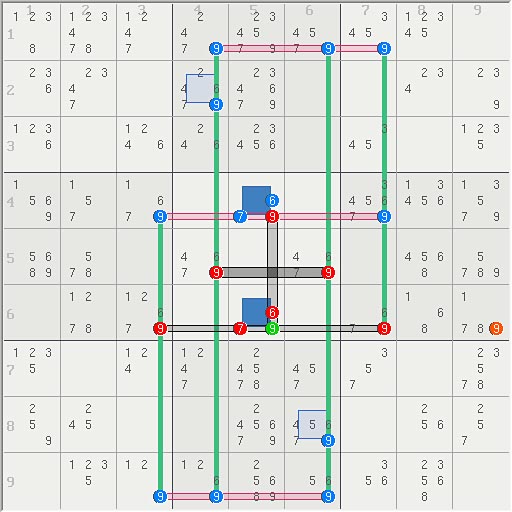from there it leaves masive overlapped deadly patterns.
if you can spot them. you will see postions where the urs point out a positon that is a sinngle that are autoplaced even with out the given clue that was removed. ie hiddne in thed linked deadly patterns.
or they are expressed directly by sets of pairs that occur frequently at the same local with all possible subpuzzles.
or in some case the deadly patterns them selves give up a local that occurs often in all probable subpuzzle notations. ie. if the ur1.1 occurs there.(3 of 4 sells solve etc)
using uncompleted grids can show repeating patterns of occurances.
infernaces from there give additional clues how to solve.
thats how i see colin doing that...
it might also help if you had the program he uses to eliminated invalid clue from the beginnning...
problem with ss. is that in unvaldi grids you still must disable the "wrong" clue protection as it doesnt correctly display more then 1 valid subpuzzle.
it still trys to solve to 1 and disalows many valid moves.
colin your probly right on that one... i still have to go look at fm in depth more... mostly i was helping from other girds where i found the lil sk loop and allan mapped it out nicly.
problem is i make things very complicated...
an overview.. basically if you remove a clue you are left with deadly patterns every where. if you disable them all or more importantly note where they are not. a single clue pattern is expressed by evaluating the potential solution counts.
(the same clues are given at specific locals due to other constraints)
basically the idea is that the same single clues are given from mutipoints of restrictions. if you remove some of those constraints others will still be there to express it as a singlton. basically your restricint the options and leaving non completed patterns which can be disabled as invalid.


